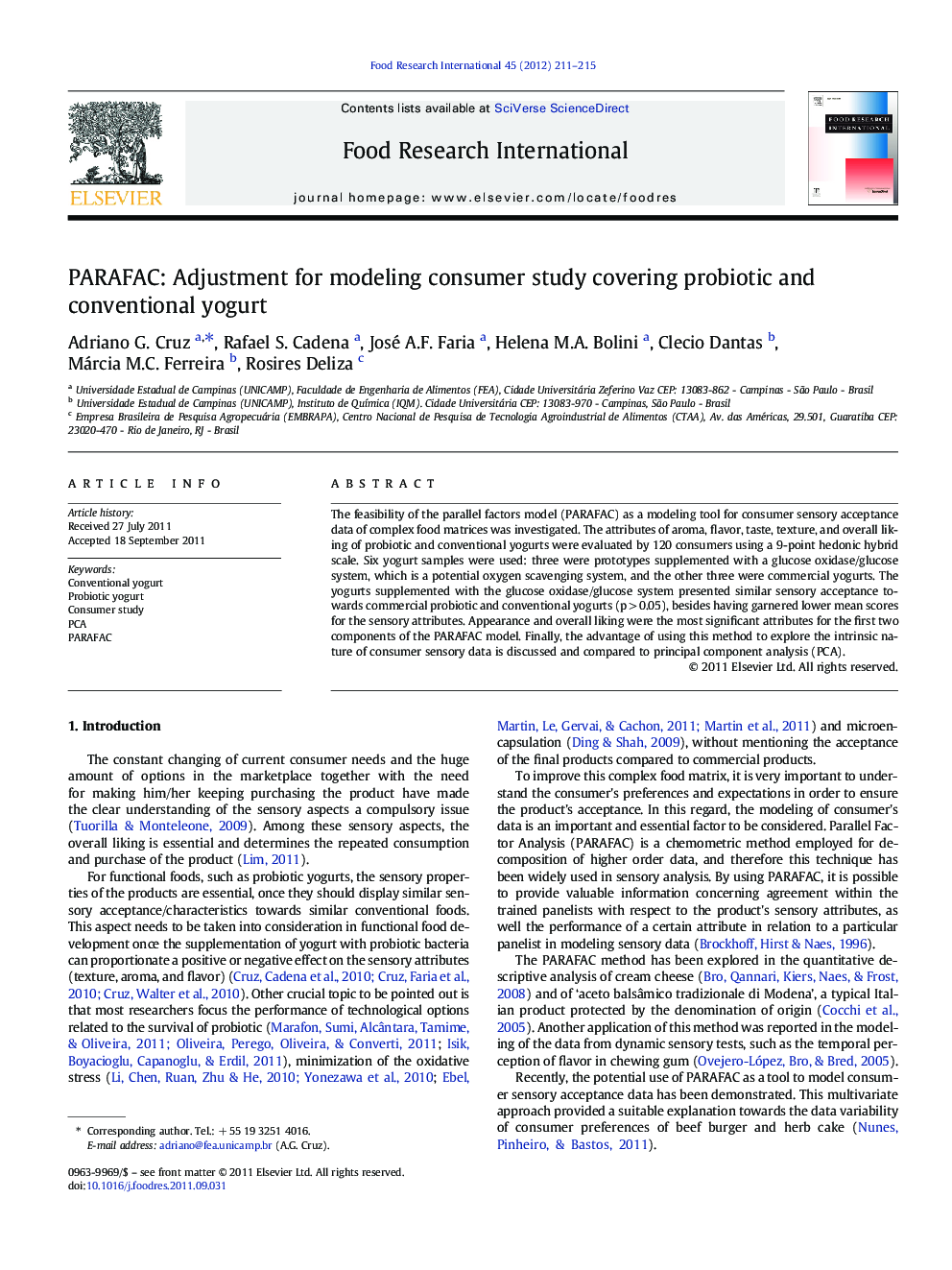| Article ID | Journal | Published Year | Pages | File Type |
|---|---|---|---|---|
| 6399384 | Food Research International | 2012 | 5 Pages |
The feasibility of the parallel factors model (PARAFAC) as a modeling tool for consumer sensory acceptance data of complex food matrices was investigated. The attributes of aroma, flavor, taste, texture, and overall liking of probiotic and conventional yogurts were evaluated by 120 consumers using a 9-point hedonic hybrid scale. Six yogurt samples were used: three were prototypes supplemented with a glucose oxidase/glucose system, which is a potential oxygen scavenging system, and the other three were commercial yogurts. The yogurts supplemented with the glucose oxidase/glucose system presented similar sensory acceptance towards commercial probiotic and conventional yogurts (p > 0.05), besides having garnered lower mean scores for the sensory attributes. Appearance and overall liking were the most significant attributes for the first two components of the PARAFAC model. Finally, the advantage of using this method to explore the intrinsic nature of consumer sensory data is discussed and compared to principal component analysis (PCA).
⺠PARAFAC was used to model consumer acceptance data. ⺠Prototypes and commercial yogurts presented similar sensory scores. ⺠Adequate data explanation was reported.
